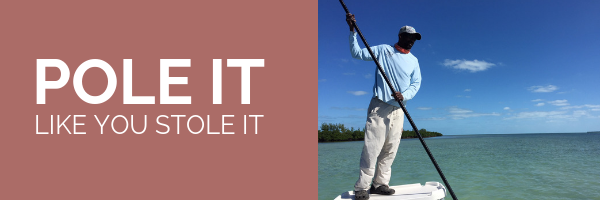Bonefish are usually found in shallow, saltwater flats.
Given the unpredictability of inshore flats fishing, you’ll find yourself confronting something new each and every day that you go out. To effectively rise to the challenges of this ever-changing environment, bonefishers have to have the best tools on hand. Among the greatest of these is the push pole. Skillful poling can bring you right up close to your prey, without alerting bonefish to your presence. Following are a few tips that will have you push poling like an expert in no time.
Get Your Foot Placement Correct
When using a push pole on the flats, there are two primary things that you should concern yourself with: being quiet and maintaining optimum control. How and where your pole connects with the flat bottom will play a major role in determining how much control you’re able to maintain. People who are new to using push poles often think that this process is all about pushing hard. In reality, however, if you do not get a good foot placement, you won’t have any control, power, or stealth at all.
Choosing The Right Side Of The Boat
To get your pole placement right, choose the side of the boat that’s going to have the greatest impact on the skiff. This will be the down-current or downwind side of the boat. When using a pole in a crosswind, place it on the side of your body that’s opposite the direction of the wind. This way, when you push astern, the bow will begin turning into the influence at a slow and steady pace. This will in turn give you a very comfortable level of control while allowing for smooth, quiet movements.
Set Your Pole At the Perfect Angle
In addition to getting a good foot placement, and making sure that your pole is on the right side of the boat, you’ll also want to set your pole at the perfect angle for ensuring an inconspicuous entry into bonefish territory. In relation to the length and direction of your stroke, this should be a downward angle from your position on the poling platform. You don’t want your stroke angle to be too close to the boat’s stern (or too acute). An overly acute angle will diminish your level of control, particularly on breezy days. It’s far better to keep you pole angle low and sufficiently far away from the stern instead.









